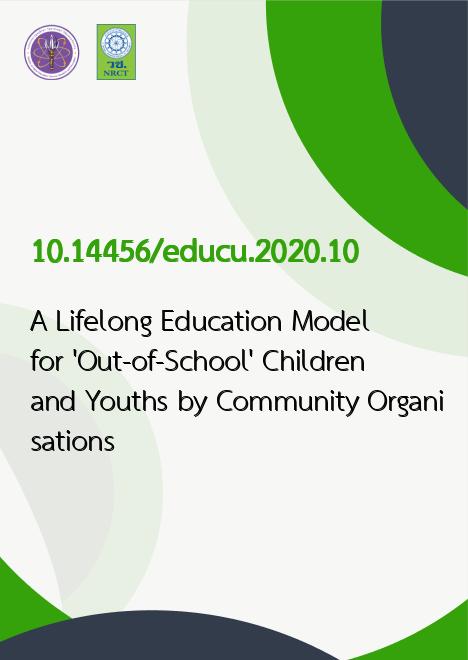
|
A Lifelong Education Model for ‘Out-of-School’ Children and Youths by Community Organisations |
|---|---|
| รหัสดีโอไอ | |
| Creator | Pattra Vayachuta |
| Title | A Lifelong Education Model for ‘Out-of-School’ Children and Youths by Community Organisations |
| Contributor | Archanya Ratana-Ubol, Weerachat Soopunyo |
| Publisher | Centre for Education Innovation, Print and Online Media |
| Publication Year | 2563 |
| Journal Title | Journal of Education Studies, Chulalongkorn University |
| Journal Vol. | 48 |
| Journal No. | 4 |
| Page no. | 257-275 |
| Keyword | lifelong education, ‘out-of-school’ children and youths, community organisations |
| URL Website | https://so02.tci-thaijo.org/index.php/EDUCU |
| Website title | Journal of Education Studies, Chulalongkorn University |
| ISSN | 2651-2017 (Online) |
| Abstract | The purpose of this study was to develop a lifelong education model for ‘out-of-school’ children and youths by community organisations. This study involved qualitative research using participatory action research (PAR) as the research methodology. The research process was conducted in collaboration with a researcher and Subsinpattana community organisations. There were four stages of the PAR cycle: 1) Planning 2) Action 3) Observation and 4) Reflection. The study site was Subsinpattana Community, Samaedam District, Bang Khunthien, located in the Bangkok area. The results found that a lifelong education model for ‘out-of-school’ children and youths by community organisations was consistent with the problems, causal factors and needs of ‘out-of-school’ children and youths. The model consisted of five components: 1) Beliefs which involve the potential of persons, especially ‘out-of-school’ children and youths. The beliefs comprise philosophy, concepts and principles; 2) Contexts of the model, including the context of problems in the community and desirable goals to be achieved; 3) People who have been involved within the model, including the target group of ‘out-of-school’ children and youths provider was community organisations and community networks; 4) Lifelong education plan, including contents related to occupational, theoretical and practical skills, learning activities, learning resources and evaluation of competencies; 5) Lifelong education approaches consisting of three types including formally structured, non-formally structured and non-structured. |